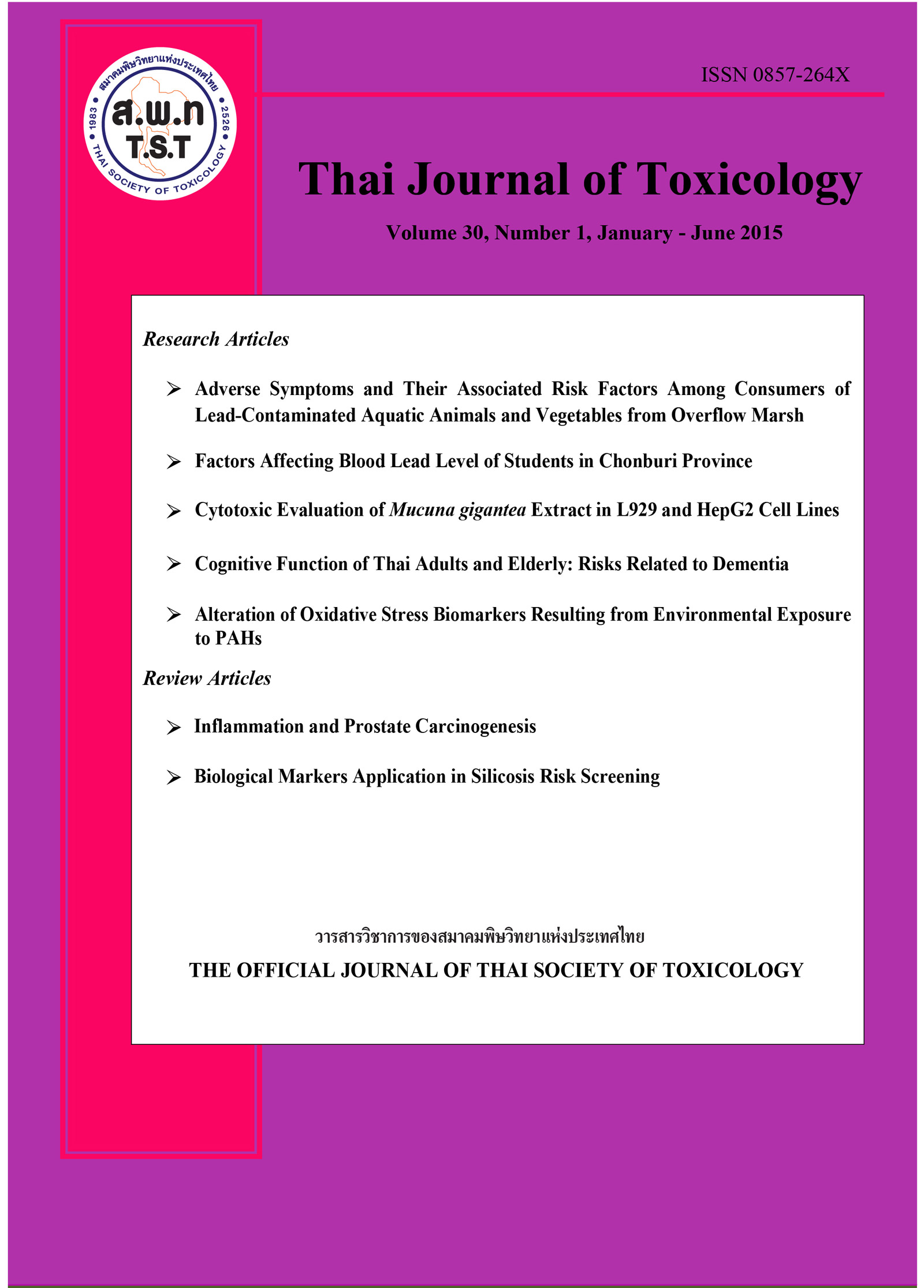Biological Markers Application in Silicosis Risk Screening
Main Article Content
Abstract
Silicosis is a typical occupational disease which is related to silica dust exposure via inhalation. A chronic exposure of silica causes changing of lung structure and function. There were 217,057 workers at silicosis risk in Thailand. If this population developed silicosis, it would cost 1,013,670,200 Baht for treatment and a patient could lost their quality of life. An early detection of silicosis should be advantage to identify high risk population before a permanent pathology developed. Biological marker is a new medical technology and one of choice for silicosis risk screening. It can identify a disease at molecular level before a severe pathology developed. Heme oxygenase-1 and Neopterin were proposed as a potential biomarker for silicosis. Heme oxygenase-1 related to oxidative stress in lung tissue caused by silica dust exposure. Neopterin is an inflammatory cytokine which was increased after silica dust exposure reached a critical level. Both biological markers will be advantage for early screening of silicosis high risk group and reduce incidence of silicosis in a future.

